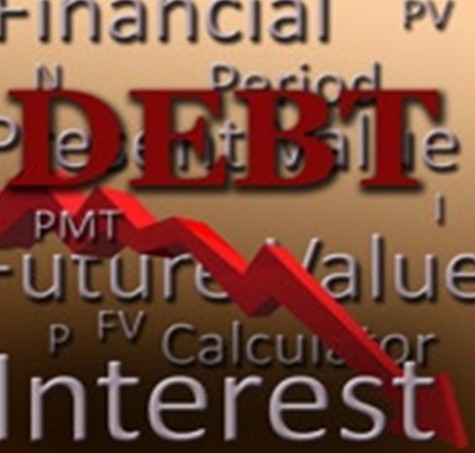发布时间: 2016年12月27日

『联邦政府的债务增加,由此导致是否要提高联邦政府的债务最 高限额的问题,对此民主党和共和党之间存在巨大分歧。』
The right way to lift the federal ceiling
提高联邦政府债务限额的最佳途径
June 7th 2011 | from Chicago Tribune

Many things that go on in Washington are too obscure or arcane1 to capture the attention of the American people, and so does the debt ceiling2. But this year is different. The battle between Democrats and Republicans on the terms for raising it is fiercer than at any time in memory, the outcome is uncertain, and the sums of money involved are huge.
So for the next few weeks, Washington is going to be embroiled3 in a debate that is part serious economics and part summer movie cliffhanger4. As melodrama5, it may be riveting6, with spirited1 fighting between and within the two parties. But the interests at stake2 are anything but fictional3.
The debt ceiling is a limit on borrowing by the federal government to pay its bills. The current ceiling stands at just under $14.3 trillion — a level that was reached in May. For the government to borrow additional funds, the limit has to be increased. And since it is currently spending far more than it takes in4, it has to be increased soon.
Treasury Secretary Timothy Geithner says that though he can find ways to maintain current operations without new borrowing for a while, the government will hit the ceiling hard on Aug. 2. Checks to retirees or civil servants could be delayed indefinitely5. Or the federal government could do something it has never done before: Default on6 its loans.
That would be a very big deal. Investors would most likely demand higher interest rates to compensate7 them for a new risk. Moody's Investors Service said last week that, in view of8 the current impasse9, it is reviewing whether to downgrade its triple-A10 credit rating11 on U.S. government debt. Standard & Poor's issued a similar warning in April.
Congressional Republicans see this moment not just as a danger, but as an opportunity. Because of the vital need for an increase, it gives them a chance to demand major fiscal reforms.
They are appalled that the federal debt has doubled since 2003 and is on course12 to keep rising indefinitely. They want spending reduced, in the short run and the long run, and if the administration refuses, they are prepared to reject a higher debt limit, with all the consequences that portends13.
As a negotiating strategy, this approach makes good sense. President Barack Obama and congressional Democrats are not eager for strict spending curbs — neither, it should be noted, were President George W. Bush and congressional Republicans a few years back — and the importance of raising the debt limit is about the only means available to force them to go along.
Better late than never for everybody in Washington. Best case, this showdown1 prompts an agreed path to a balanced budget and debt reduction. At a minimum2, it has to produce a multitrillion-dollar down payment on that promise.
The need for a resolution has, among other things, spurred the White House to propose a "fail-safe"3 plan to trigger automatic corrective measures if Washington can't put the deficit on a downward path. It has put spending restraint and fiscal responsibility at the top of the agenda, which is right where they ought to be.
It's important, of course, that the government honor its immediate obligations, for reasons both moral and economic. But it's even more vital that our leaders join together to make the decisions required to restore our fiscal solvency4 — for tomorrow, and the next day, and decades to come.
That should have been done long before now. The debt ceiling fight is a chance to see that it is not postponed once again.
上一篇: 2017高考数学复习提纲:计数原理
下一篇: 考研阅读精选:微博能预练未来吗?
历年考研真题下载